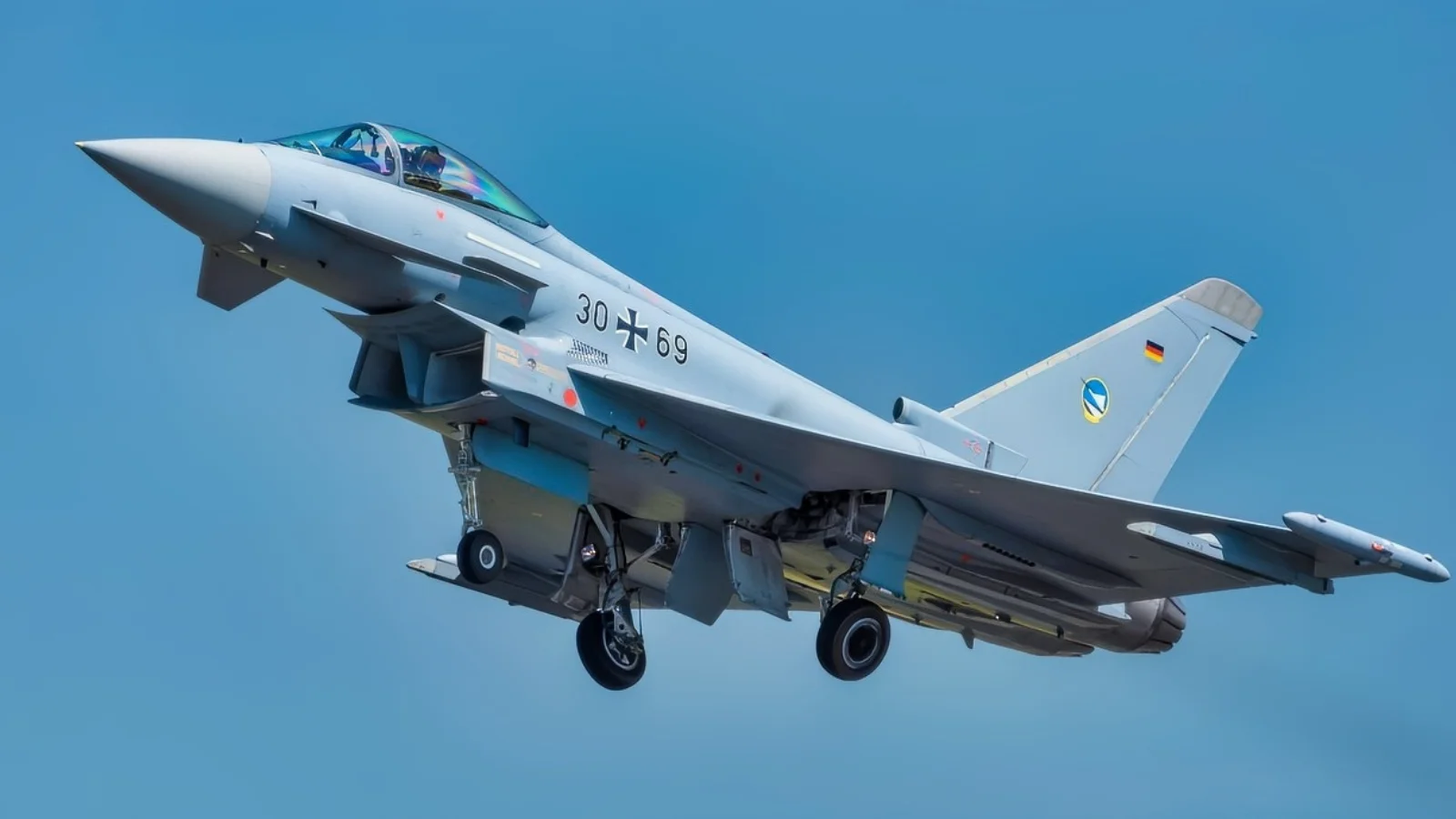The Eurojet EJ200 engine is central to the Typhoon’s capabilities. Based on Rolls-Royce XG-40 technology from the 1980s and managed by a consortium formed in 1986 (EuroJet Turbo GmbH), over 1,400 units have been contracted for production across Germany, the United Kingdom, Italy, and Spain. MTU Aero Engines holds a 30% production share and is responsible for key components like compressors and digital engine controls for German Air Force engines as well as those supplied internationally.
MTU developed blisk compressor stages at its Munich facility—a technology now also found in commercial aviation—and oversees assembly and maintenance of these engines. Two EJ200s are currently used in BAE Systems’ Tempest demonstrator ahead of new engine development for future programs.
The Typhoon’s "relaxed stability" design allows it to be inherently unstable but highly responsive via fly-by-wire controls. The Delta-Canard layout improves lift and control while keeping wing loading low—enabling sharper turns at higher speeds compared to many other jets.
Originally conceived as a multinational project by several European countries, the Typhoon’s user base has expanded beyond Europe to include Austria, Oman, Kuwait, Qatar, and Saudi Arabia.
In terms of mission flexibility ("swing role"), the Typhoon can switch between air-to-air combat and ground attack within one sortie. It features multiple hardpoints for varied payload configurations—including advanced missiles—while maintaining situational awareness through AESA radar systems (CAPTOR-E), infrared tracking (PIRATE FLIR), sensor fusion computers, and electronic countermeasures like PRAETORIAN DASS.
While known for speed and maneuverability as a fourth-generation fighter jet, it lacks stealth features present in newer platforms such as Lockheed Martin’s F-35 Lightning II or F-22 Raptor—jets designed with advanced sensors that allow them to detect adversaries before being seen themselves.
During joint exercises at Ramstein Air Base between U.S. Air Force F-35As piloted by Captain Patrick “Hobbit” Pearce and German Eurofighters flown by Lieutenant Alexander “Stitch” Grant—both pilots acknowledged each other’s aircraft strengths during close-range engagements (“the merge”). Grant was able to use his jet’s superior energy retention post-merge to secure a simulated gun kill against Pearce despite both pilots experiencing significant physical strain under high G-forces.
At Red Flag Alaska exercises in 2012 involving over thirty aircraft from nine NATO nations—including Boeing F/A-18E/F Super Hornets and F-22 Raptors—the Eurofighter achieved numerous simulated victories against rival jets using dissimilar tactics.
Pearce noted that outside training environments he would rely on his platform's "first-look, first-shot" advantage rather than engage directly with dogfighters like the Typhoon; however upgrades such as AESA radar systems ensure that even as stealth becomes more prevalent among adversaries' fleets, future variants of the Eurofighter remain competitive.
 Alerts Sign-up
Alerts Sign-up




































